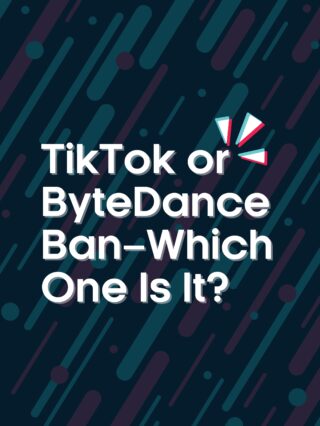Huge movement in the premium video content space in recent months calls for a new spin on the age-old marketing maxim, “follow the consumer.” Anyone interested in understanding which way the winds of media and marketing are blowing would be wise to “follow the content” first.
On the heels of AT&T spinning off Warner Media to merge with Discovery Inc. to form a new company (that we now know will be called Warner Bros. Discovery) in a deal worth $43 billion, Amazon announced that they are scooping up iconic Hollywood studio MGM for $8.45 billion. These deals create a new streaming giant and fortify an existing one. Of course, it wasn’t all that long ago that Disney purchased 21st Century Fox’s content library and launched Disney+. These moves consolidate huge treasure troves of premium content and production capabilities within a few power players in the world of streaming content.
We tend to focus on consumer behavior, but we should take a closer look at what’s driving consumer behavior in the first place. Given the deals outlined above, coupled with the billions of dollars that players like Netflix, Disney+, Amazon, and others are spending on producing original content, it’s clear that the center of gravity for content that viewers really want has already shifted to the streaming services–that’s before we even consider the ongoing growth of a wildcard like YouTube. As we are seeing, consumers are already following content in droves. Consider these facts:
Cable TV lost 1.5 million U.S. households to cord-cutting in Q1 of 2021
Comcast, the largest cable provider in the U.S., saw subscribers dip below 20 million in Q1 of 2021
There are now between 23–24 thousand YouTube channels with more than 1 million subscribers
Over the past five years, Netflix has produced more movies than any traditional Hollywood studio
At this point, you may be asking yourself, “so what?” We all know that eyeballs and content are moving to streaming. Aside from the fortunes of a few large companies, why should we care? Well, for those of us striving to reach and foster meaningful relationships with audiences, this is a very important moment. The point may seem subtle, but the wave of change that’s coming is not as much about the form factor (streaming vs. linear TV) as it is about the accessibility of desirable, premium content.
When practically all of the sought-after content is living in on-demand, direct-to-consumer streaming services, the argument for linear TV weakens to a critical point. When everything can be called up at the whim of the consumer, there’s really no practical reason to have “channels” playing shows or movies in a linear way.
Aside from sports, news, and other live events, when consumers watch something is pretty much entirely up to them. Now even premium sports content like NFL’s Thursday Night Football is going to Amazon Prime and NHL games are going exclusively to ESPN+, and the trend continues. It’s clear that the future will not include consumers having one paid TV subscription that gets them all (or most) of what they want. Rather, it will be a curated collection that will be much more personalized than ever before. It will also be much more transitory. TV is no longer a utility; it is a series of subscriptions with nonexistent switching costs. You can pick up HBO Max for a month to binge Watchmen and then drop it for Hulu for a month to watch the latest episodes of A Handmaid’s Tale. Or, if you like, you can always just buy or rent whatever you want a-la-cart from services like Amazon and Google Play.
For marketers, this is really important. We regularly hear people in the industry say things like, “yeah, but there’s still so much reach on TV.” That’s true today, but it is becoming less and less true as each day passes. Reaching audiences today is about understanding what content drives their behavior and finding opportunities to engage with them in a myriad of digital-first spaces. Of course, there are large players in this new streaming frontier that offer no marketing opportunities, like Netflix, Disney+, and Amazon Prime. However, there are offerings like HBO Max’s ad-supported option, Paramount+, Peacock, Hulu, IMDb TV, and many others that sell ads. Again, not noting the bottomless pit of ad inventory that is, YouTube.
Perhaps just as important as all of these trends is the idea that as we follow the content, it is incumbent upon us to reimagine the marketing content that we bring to this new streaming party. Much as the consumer’s relationship with content is becoming more personal, the marketing content must as well. Spots that were clearly made for linear TV stick out like a sore thumb in digital environments. Consumers will not engage with brands who lag behind in adapting into the streaming space. If you’re starting with a TV spot and cutting it seven different ways to fit the new platforms, you are already losing. The good news here is that the platforms and services are realizing this as well. You can now buy out episode blocks on streaming services like HBO Max with sequenced six-second spots that limit interruption and boost engagement. Providers like YouTube are actively doing more to help marketers by supporting them and offering creative strategy to impact specific audiences.
While rapid change like this can feel a bit daunting, the news is mostly good. As marketers, these changes will enable us to do what we really want to do–make genuine connections with audiences. It will give us the ability to come alongside them and add value as they do the things that they enjoy. As great as TV advertising has been for our industry through the years, mass linear TV buys come with huge amounts of waste. That waste has created clutter, noise, and disengagement. As we follow the content into exciting new spaces, we can simultaneously make the experience of marketing better for everyone involved.





